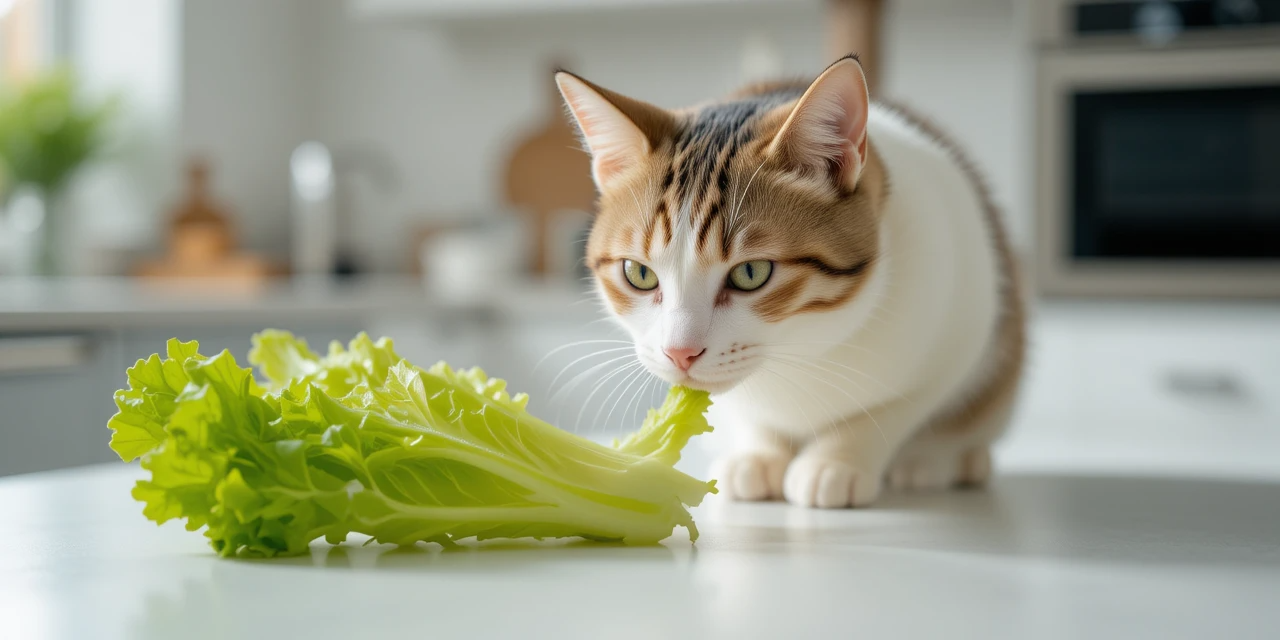Can Cats Eat Lettuce? The Ultimate Guide to Feline-Friendly Greens
If you’ve ever caught your cat nibbling on a leaf of lettuce, you might wonder—is it safe?
The short answer: Yes, cats can eat lettuce in moderation. It’s non-toxic, low in calories, and can even be beneficial when offered properly.
But as obligate carnivores, cats have specific dietary needs that lettuce can’t fulfill. Let’s explore when lettuce can be a crunchy treat—and when it’s best left off the menu.
Understanding Feline Nutrition
Cats are obligate carnivores. This means their bodies are designed to get essential nutrients—like taurine, arachidonic acid, and vitamin A—from meat.
Plant-based foods, like lettuce, don’t offer the complete nutrition your cat needs, but they can provide some benefits when used sparingly as treats—not as replacements.
Is Lettuce Safe for Cats?
Yes, lettuce is non-toxic to cats, including common types like romaine, iceberg, and butterhead.
However, not all cats tolerate leafy greens equally. Some may enjoy the crunch, while others may walk away unimpressed—or worse, experience minor digestive upset.
Key Point: Moderation is essential. Lettuce should never replace a balanced, meat-based diet.
Nutritional Breakdown of Lettuce
| Nutrient | Amount (per 100g of romaine lettuce) |
|---|---|
| Water | 95g |
| Calories | 17 kcal |
| Fiber | 2.1g |
| Vitamin A | 436 µg |
| Vitamin K | 102 µg |
| Folate (B9) | 136 µg |
Comparing Lettuce Types:
- Romaine: Highest in vitamins A and K.
- Iceberg: Mostly water, least nutritious.
- Green Leaf: High in folate and vitamin C.
- Butterhead: Soft texture, moderate nutrients.
Benefits of Lettuce for Cats
✔️ Hydration – Lettuce’s high water content can help keep your cat hydrated.
✔️ Fiber – Small amounts may aid digestion and ease hairball passage.
✔️ Low-Calorie Treat – A healthy alternative to calorie-dense snacks.
✔️ Mental Enrichment – New textures and smells can stimulate curious cats.
Risks and Precautions
⚠️ Digestive Upset: Too much lettuce can cause vomiting or diarrhea.
⚠️ Pesticide Residue: Always wash thoroughly to remove chemicals.
⚠️ Choking Hazard: Avoid large pieces that could block airways.
⚠️ No Dressings: Oils, salts, and seasonings can be toxic.
Important: If your cat has allergies, IBS, or other medical conditions, consult your vet before offering any new foods.
How to Introduce Lettuce to Your Cat
🟢 Start small! Here’s a safe step-by-step guide:
- Choose Organic when possible, to reduce pesticide risk.
- Wash Thoroughly under cool water.
- Chop Finely into bite-sized pieces.
- Serve Plain, without dressing, oil, or spices.
- Monitor Your Cat for 24 hours after the first taste.
If your cat turns up their nose? No problem—just move on. Not every cat is a fan of leafy greens.
Alternatives to Lettuce
Want to add variety to your cat’s veggie treats? Try these safe, vet-approved options:
- Steamed Carrots – Sweet, soft, and rich in beta-carotene.
- Zucchini – Low-calorie and easy on the tummy.
- Green Beans – A crunchy, fiber-filled snack.
Note: Always cook or soften veggies (except lettuce), and serve them unseasoned.
Frequently Asked Questions
Can kittens eat lettuce?
Not recommended. Their developing digestive systems are sensitive, and they require more precise nutrition from meat-based sources.
How often can I give my cat lettuce?
1–2 small pieces once or twice a week is plenty.
What signs show my cat can’t tolerate lettuce?
Watch for vomiting, diarrhea, or signs of discomfort after eating.
Conclusion
Yes, cats can eat lettuce—but it’s far from a dietary essential. While a small leaf now and then can be fun, refreshing, and hydrating, the cornerstone of your cat’s diet should always be high-quality animal protein.
So if your curious kitty wants a nibble? Let them try a taste. Just be sure it’s clean, fresh, and given in moderation.


